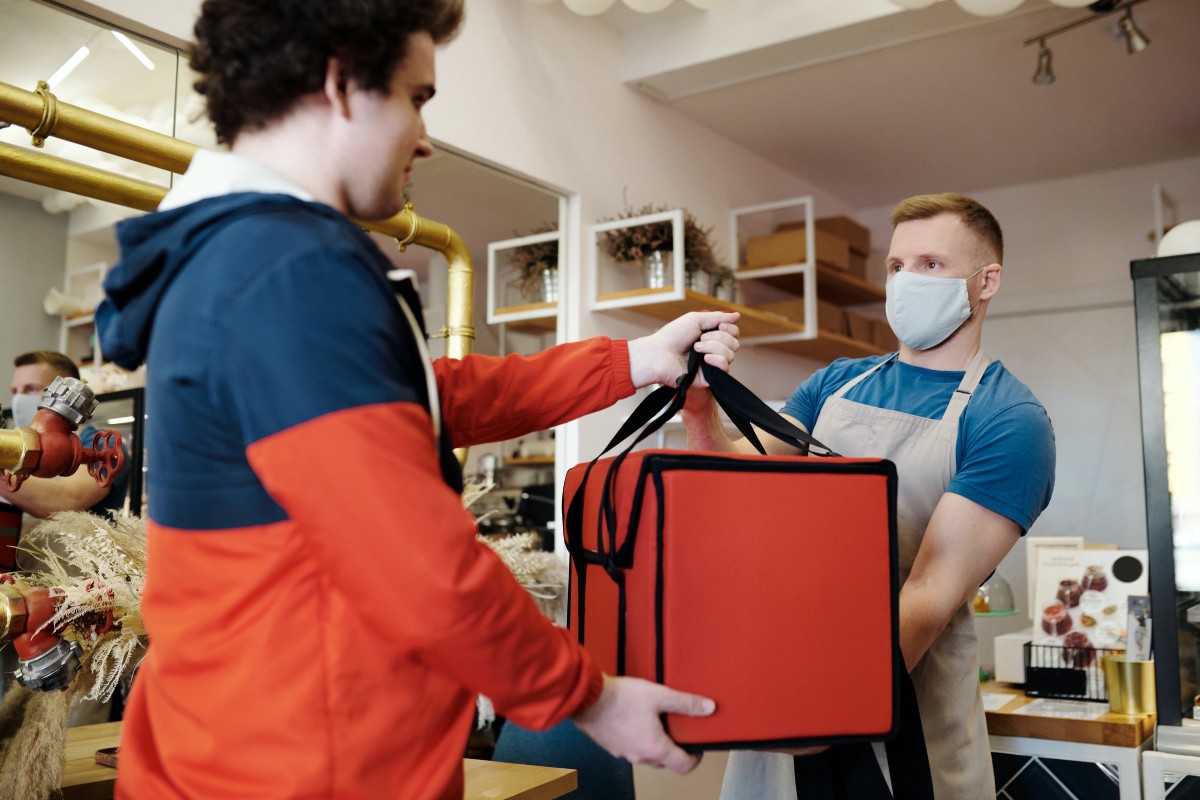Introduction
Our modern society thrives on convenience, and nothing exemplifies that more than food delivery services. The ability to order food from various outlets and deliver it right to your doorstep is an innovation we’ve quickly become accustomed to. However, with this convenience often comes an environmental cost. This is where sustainable food delivery services come into the picture.
Understanding the Need for Sustainable Food Delivery
Sustainability in food delivery is all about balancing our desire for convenience with the need to protect our planet. This includes considerations around where the food comes from, how it’s packaged, and how it’s delivered. Traditional food delivery services can generate significant waste, from non-recyclable packaging materials to carbon emissions from delivery vehicles.
Sustainable food delivery seeks to minimize these environmental impacts. It’s not just about offering healthier food options; it’s about taking a holistic approach that considers the environmental footprint at every step of the process.
Environmental Impact of Traditional Food Delivery
The traditional food delivery model can have several negative environmental impacts. For one, it often involves long supply chains, with food being transported long distances before reaching the consumer. This leads to a high carbon footprint from transportation alone.
Then, there’s the issue of packaging. Most delivered meals come in single-use plastic containers, contributing to plastic waste often in landfills or oceans. Add to this the energy consumption of maintaining cold storage during transit, and it’s clear that the food delivery industry has a significant environmental footprint.
Overview of Sustainable Food Delivery Services
Sustainable food delivery services are responding to these challenges in innovative ways. They seek to minimize environmental impacts by focusing on local, seasonal produce, using eco-friendly packaging, and employing energy-efficient delivery methods.
Some services offer farm-to-table delivery, connecting consumers directly with local farmers and reducing the carbon emissions associated with long-distance food transportation. Others provide meal kits in reusable or recyclable packaging, reducing plastic waste. Some even integrate electric vehicles or bikes into their delivery fleet to lower carbon emissions further.
Sustainable food delivery services represent a growing commitment to integrating sustainability into every aspect of our lives, including how we get our food. Throughout this blog post, we will explore how these services operate, their benefits, and how they’re shaping the future of food delivery.
These businesses are leading the charge in transforming our food system, making it easier for consumers to make good choices for themselves and the planet. It’s a fascinating shift in how we think about food and promises to bring about healthier people and a healthier planet.
How Sustainable Food Delivery Services Work
Sustainable food delivery services work by fundamentally rethinking and redesigning the food delivery process to reduce environmental impact. From sourcing ingredients and producing meals to packaging and delivering them to consumers, every step is executed with sustainability in mind.

Food Sourcing and Production
Sustainable food delivery services prioritize locally sourced, seasonal, and organic produce. This approach reduces the carbon footprint associated with transporting food across long distances, supports local farmers, and promotes biodiversity. Many such services also emphasize plant-based or vegan meals, which have a smaller environmental footprint than meat-based diets.
By partnering with farmers who use sustainable farming practices, these services can help reduce harmful pesticides and fertilizers, thus protecting soil health and water quality. In some cases, the food delivery services even operate their farms and gardens, giving them complete control over the cultivation process.
Packaging and Delivery Methods
Packaging is another area where sustainable food delivery services differ significantly from traditional ones. Instead of single-use plastic containers, they opt for recyclable, compostable, or reusable packaging. Some even employ returnable containers that can be cleaned and reused, eliminating waste entirely.
As for delivery, many sustainable food delivery services are exploring low-emission vehicles such as electric cars or bicycles, especially for local deliveries. They aim to optimize delivery routes for longer distances to minimize fuel consumption. Some companies also offset their carbon emissions by investing in renewable energy projects or other sustainability initiatives.
Waste Management and Recycling
Lastly, these services are mindful of waste management. They work to minimize food waste by carefully planning meal portions and using imperfect produce that might otherwise be thrown away. They also encourage consumers to compost food scraps where possible.
For packaging waste, companies provide clear instructions on how to responsibly dispose of or return packaging. In some cases, they partner with recycling programs to ensure that packaging gets a second life.
In conclusion, sustainable food delivery services operate on the principles of local sourcing, waste reduction, recyclable or reusable packaging, and low-emission delivery methods. In doing so, they demonstrate that it’s possible to enjoy the convenience of food delivery while also caring for the environment. This conscientious operation is paving the way for a more sustainable future in the food industry.
Case Studies of Successful Sustainable Food Delivery Services
Sustainable food delivery services have made significant strides in creating a greener model for delivering meals to consumers’ doorsteps. This section explores successful case studies, offering real-world examples of farm-to-table delivery services, zero-waste meal kits, and local food co-op delivery services. These companies are leading the charge toward a more sustainable food industry.
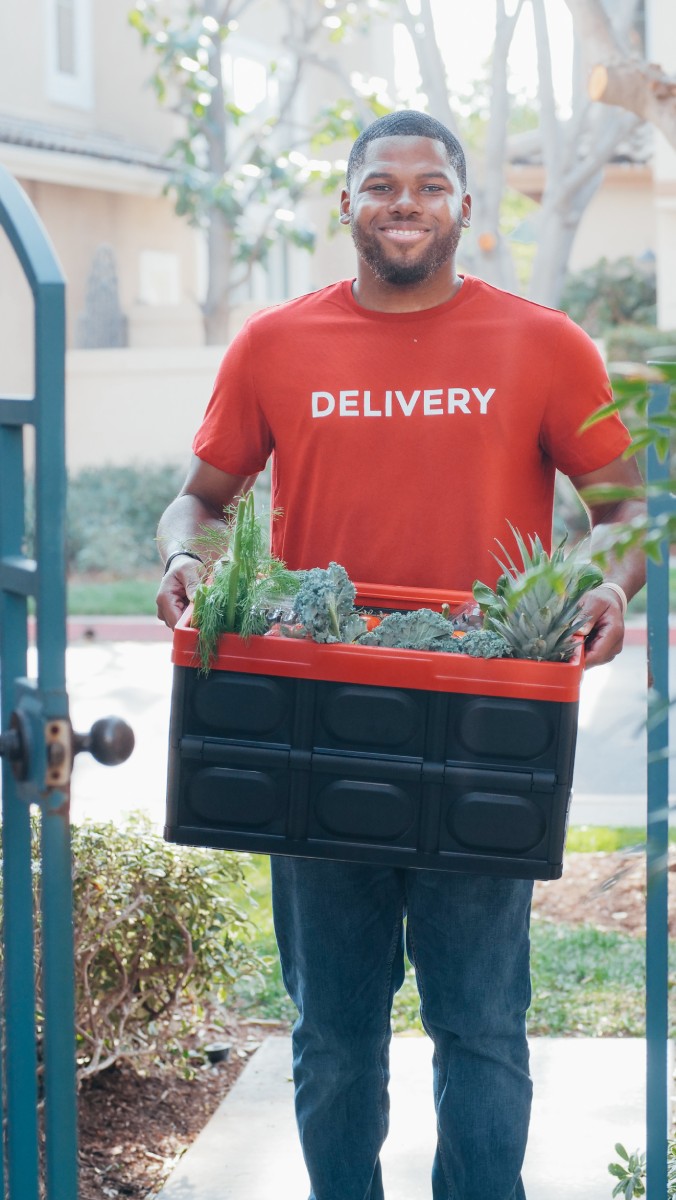
Farm-to-Table Delivery Services
Farm-to-table delivery services connect consumers directly with local farmers. A perfect example of this model is FarmDrop. This UK-based company sources food items from local farmers and delivers them to customers’ homes. They’ve minimized their food miles, ensured fresh and organic produce, and bolstered local economies by supporting small-scale farmers. They also use electric vans for deliveries, further reducing their carbon footprint.
Zero-Waste Meal Kit Services
Some meal kit services have taken the challenge of creating a zero-waste model. GreenChef, for instance, is a U.S.-based service that delivers organic meal kits with carbon-neutral shipping. They prioritize sustainable ingredient sourcing and have implemented a packaging return program. This allows customers to return packaging materials, which are then cleaned and reused, effectively cutting down on waste. GreenChef’s practices show the potential for combining convenience and sustainability in meal preparation.
Local Food Co-op Delivery Services
Local food co-operatives also offer an excellent model for sustainable food delivery. For example, the Park Slope Food Coop in Brooklyn, New York, is a member-owned and operated food store dedicated to sustainably produced food. Though they don’t deliver themselves, they’ve partnered with a local green delivery service, YourLocal, to offer eco-friendly delivery options for their members. It’s a synergistic partnership that underscores the power of local collaborations for promoting sustainability.
Each of these services, though different in approach, is committed to reducing the environmental impact of food delivery. They demonstrate that there are diverse ways to approach sustainable food delivery, and their success suggests that consumers are increasingly receptive to greener options. As we become more conscious of our environmental footprint, such services will likely continue to grow.
The Environmental Benefits of Sustainable Food Delivery Services
Sustainable food delivery services bring numerous environmental benefits, making them a viable option for eco-conscious consumers. This section will outline how these services contribute to a reduced carbon footprint, waste reduction, and the support of sustainable agriculture.
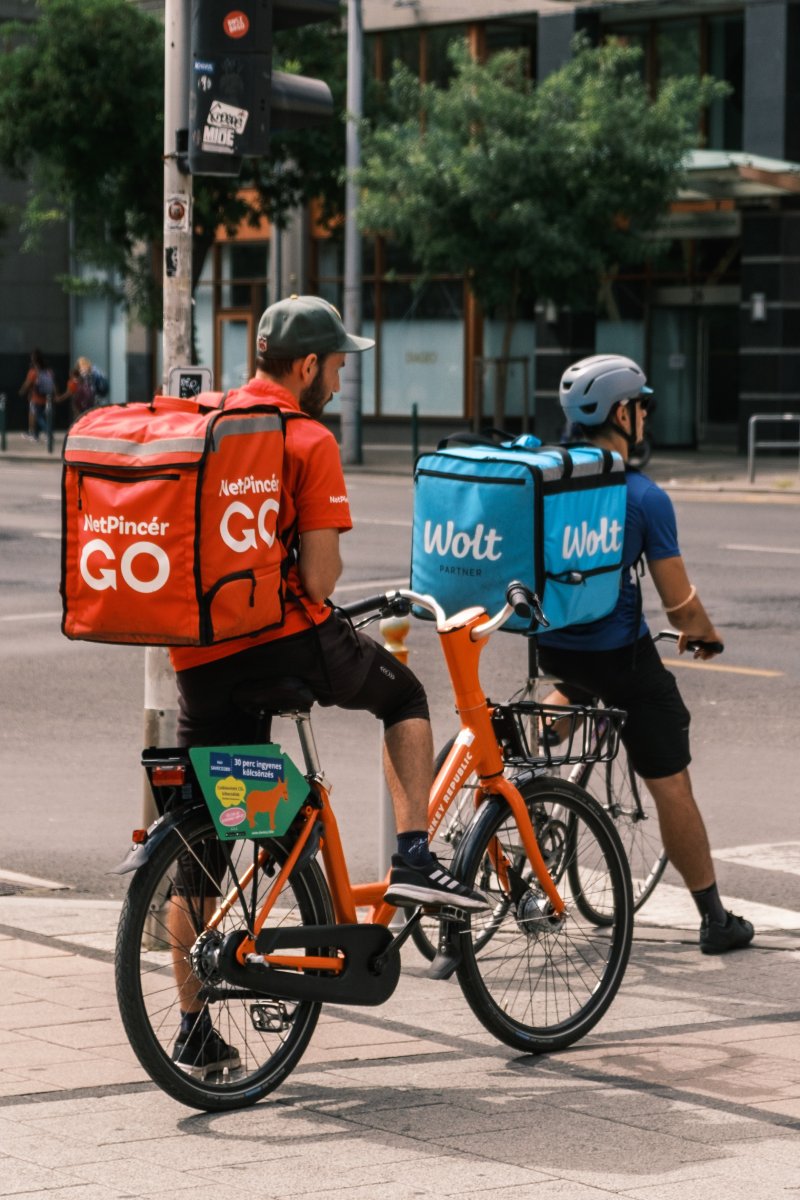
Reduced Carbon Footprint
One of the most profound impacts of sustainable food delivery services is their ability to reduce carbon emissions. Traditional food delivery methods often involve long-distance shipping and transport, significantly contributing to greenhouse gas emissions. Conversely, sustainable services typically source locally, minimizing transportation distances, and often use low-emission or electric vehicles for delivery, considerably reducing the overall carbon footprint.
Waste Reduction
Waste reduction is another key benefit of sustainable food delivery. Traditional services often generate substantial waste through single-use packaging and food waste from unsold products. In contrast, sustainable food delivery companies often incorporate zero-waste principles into their operations, utilizing reusable or biodegradable packaging, offering returnable packaging schemes, and optimizing their supply chains to minimize food waste. These practices reduce landfill waste and decrease the resources required for packaging production.
Supporting Sustainable Agriculture
Sustainable food delivery services also support sustainable agriculture by sourcing from organic, regenerative, or local farms. These farming methods help preserve biodiversity, improve soil health, and reduce the use of synthetic fertilizers and pesticides, which can harm the environment. In doing so, these services provide customers with fresh and healthy food and contribute to a more sustainable and resilient food system.
In conclusion, the environmental benefits of sustainable food delivery services are substantial and multifaceted. They prove that convenience doesn’t have to come at the cost of our planet. Through their innovative business models, these services are helping to shape a more sustainable future for the food industry.
Health and Lifestyle Benefits of Sustainable Food Delivery Services
Beyond their environmental contributions, sustainable food delivery services also offer various health and lifestyle benefits. These include access to fresh, locally sourced produce, the health benefits of organic and sustainably grown foods, and the convenience of home delivery.
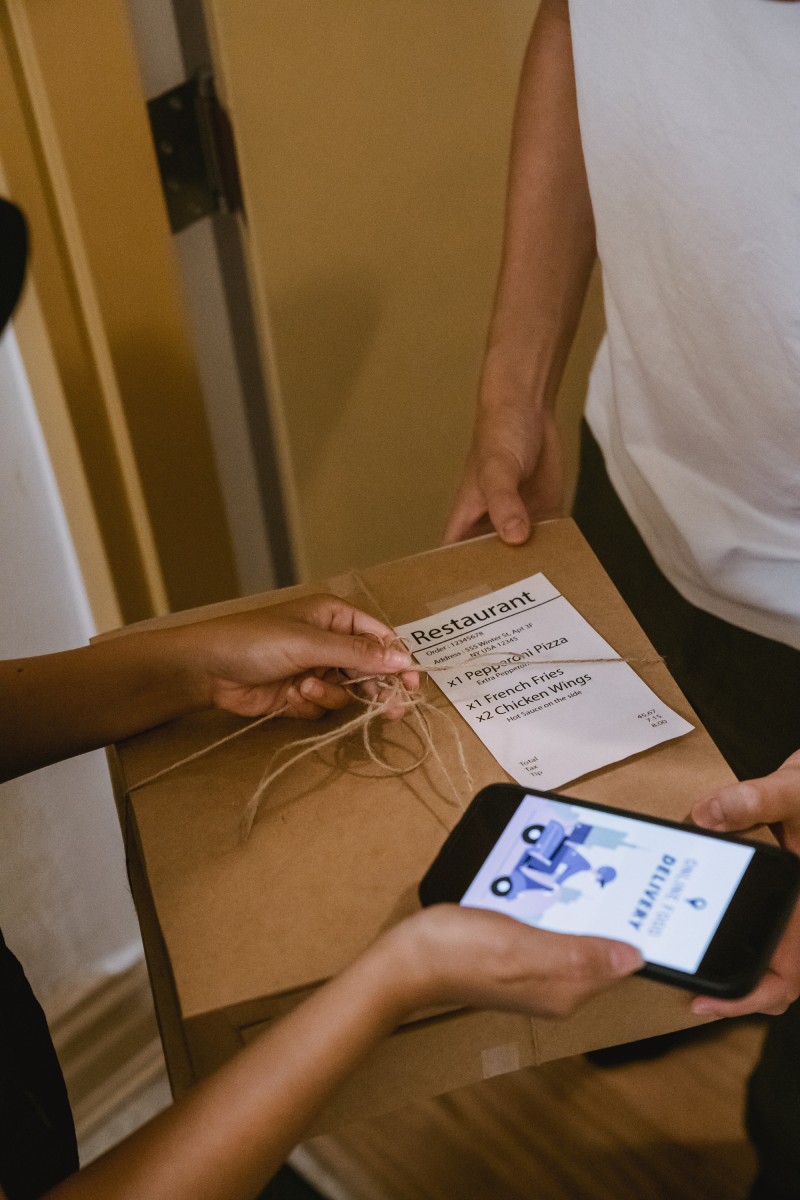
Access to Fresh, Locally Sourced Produce
A significant advantage of sustainable food delivery services is their direct access to fresh, locally sourced produce. Traditional grocery stores often stock fruits and vegetables that have traveled long distances, losing some of their freshness and nutritional value. On the other hand, sustainable food delivery services typically source their produce from local farmers, ensuring that the food delivered to your door is as fresh as possible.
Health Benefits of Organic and Sustainable Foods
The organic and sustainably grown foods these delivery services offer bring multiple health benefits. They are typically free from harmful pesticides and genetically modified organisms (GMOs), producing cleaner, more nutritious food. Some studies suggest that organic foods may contain higher levels of certain nutrients than conventionally grown counterparts. Sustainable food delivery services help promote better overall health by facilitating access to these healthier foods.
Convenience and Ease of Sustainable Food Delivery
Sustainable food delivery services also provide immense convenience. With just a few clicks, consumers can have fresh, healthy, and sustainably produced meals delivered straight to their doors. This saves time and energy spent on grocery shopping and meal planning and makes sustainable eating more accessible to those with busy lifestyles. Furthermore, many of these services offer meal kits or pre-prepared meals, making cooking easier and more enjoyable.
In conclusion, sustainable food delivery services’ health and lifestyle benefits make them an excellent choice for individuals looking to improve their diet, support their local economy, and reduce their environmental impact. By choosing these services, consumers can enjoy fresher, healthier meals without compromising convenience or sustainability commitment.
Overcoming Challenges in Sustainable Food Delivery
Despite their advantages, sustainable food delivery services face unique challenges that they must overcome to ensure long-term success. These include addressing higher costs associated with sustainable practices, ensuring the quality and freshness of delivered food, and expanding their accessibility and reach to a broader customer base.

Addressing Higher Costs
Sustainable food delivery services often encounter higher operating costs than their conventional counterparts. These can stem from sourcing organic or locally produced food, using eco-friendly packaging, and implementing sustainable waste management practices. However, many services have found ways to address this issue. By educating customers about the value of sustainable and organic food, they justify the marginally higher prices. Moreover, operational efficiencies, such as optimizing delivery routes for fuel efficiency, can help reduce costs.
Ensuring Quality and Freshness
Maintaining the quality and freshness of food during transportation is another challenge. Sustainable food delivery services must invest in effective packaging and transport methods to ensure food remains fresh upon delivery. This includes using insulated packaging, refrigerated transport, and fast delivery times. In addition, they must ensure their packaging is sustainable, balancing maintaining food quality and minimizing environmental impact.
Expanding Accessibility and Reach
Finally, expanding their accessibility and reach presents another challenge for sustainable food delivery services. These services initially operate in limited areas, often focusing on urban settings. However, there is a growing demand for such services in rural areas and smaller towns. To address this, some services partner with local farmers and suppliers in these regions, enabling them to expand their reach without compromising their sustainability principles.
Overcoming these challenges requires innovation, dedication, and a commitment to sustainability. However, with consumer demand for sustainable options growing, the effort can pay off in customer loyalty, positive brand recognition, and a reduced environmental footprint. As such, these challenges, while significant, are far from impossible and serve as opportunities for sustainable food delivery services to innovate and grow.
Role of Technology in Sustainable Food Delivery
Technology plays a significant role in successfully implementing sustainable food delivery services. It streamlines processes, enhances customer experience, and contributes to reducing environmental impact. Technology propels the industry toward a more sustainable future, from ordering through apps and websites to efficient delivery route planning and using the Internet of Things (IoT) and Artificial Intelligence (AI).
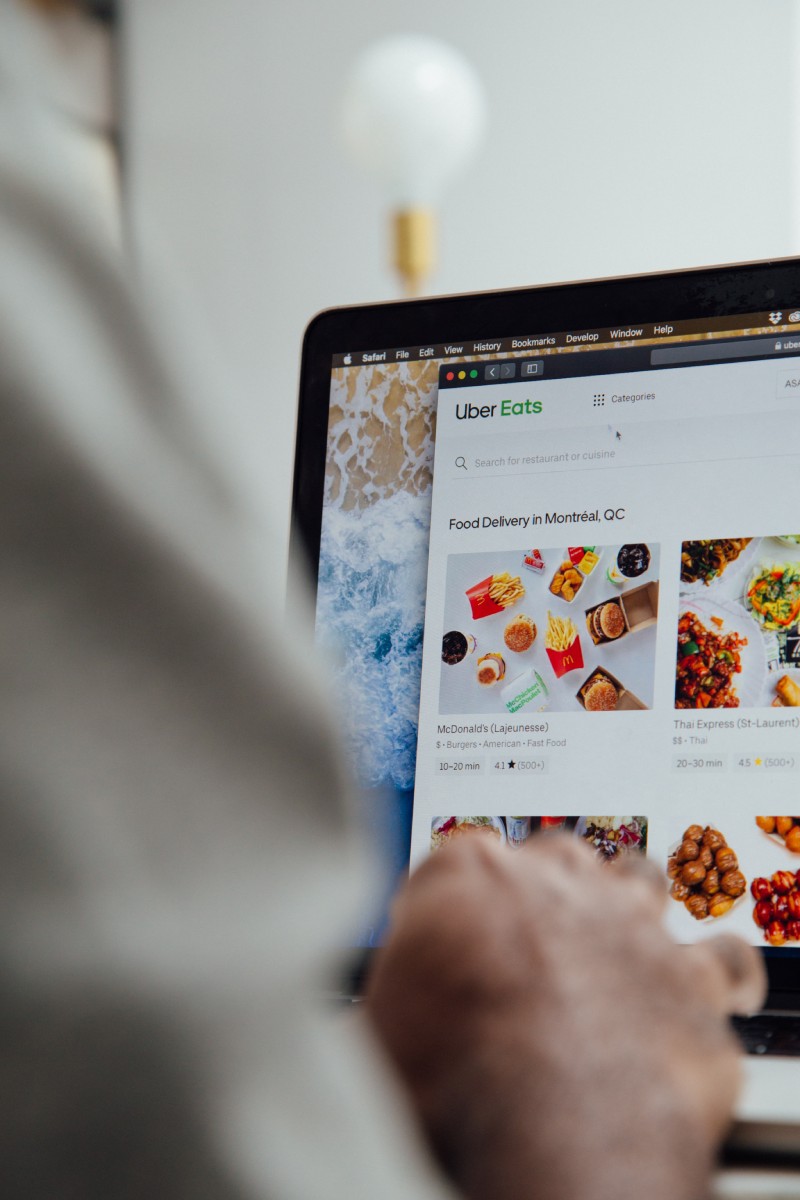
Use of Apps and Websites for Ordering
Online platforms have revolutionized the way we order food. Using apps and websites for ordering food brings customers convenience, personalization, and transparency. It allows sustainable food delivery services to showcase their offerings, share the story behind their food sourcing, and easily communicate with their customers. Moreover, digital platforms enable services to implement features such as meal customization and flexible delivery schedules, enhancing the overall customer experience.
Efficient Delivery Route Planning
Efficient delivery route planning is crucial for minimizing fuel consumption and emissions, thereby reducing the environmental impact of delivery operations. GPS technology, combined with advanced algorithms, can calculate the most efficient delivery routes, considering factors like road traffic and weather conditions. Some services even incorporate electric or hybrid vehicles into their fleet to reduce carbon footprint. Thus, technology greatly assists in achieving an efficient and sustainable delivery system.
IoT and AI in Food Storage and Delivery
The Internet of Things (IoT) and Artificial Intelligence (AI) transform food storage and delivery. IoT devices can monitor and control the temperature of stored food to ensure its freshness. Additionally, AI can be used for predictive analytics, which helps forecast demand, reduce food waste, and optimize delivery routes. For instance, AI can analyze past orders and customer preferences to predict future demand, ensuring the right amount of food is sourced and prepared, minimizing waste.
Integrating such technological innovations into sustainable food delivery services not only boosts operational efficiency and customer satisfaction but also significantly contributes to reducing the environmental impact of food delivery. As technology advances, its role in promoting sustainability in food delivery is set to become even more central.
Future of Sustainable Food Delivery Services
As sustainability becomes a guiding principle for businesses across sectors, the future of food delivery lies in becoming more environmentally friendly. Trends and predictions, potential innovations in the sector, and the impact of policies and regulations influence this move toward sustainable practices.
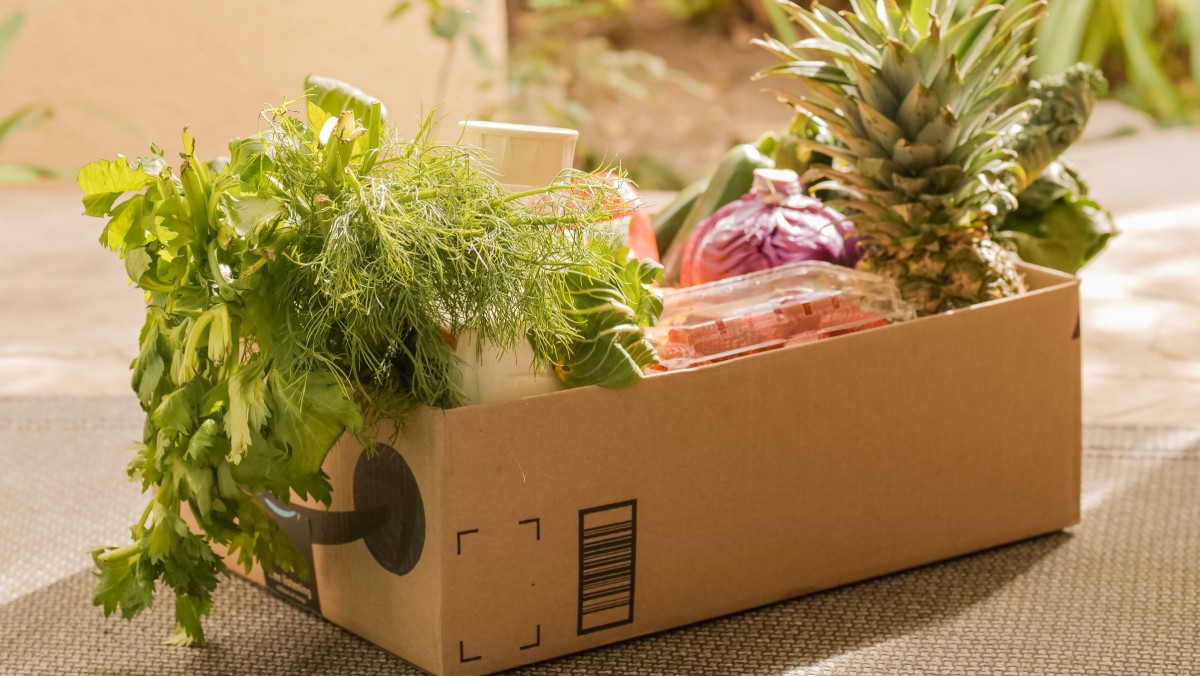
Trends and Predictions
Consumer demand for sustainable options is growing. With increasing awareness of environmental issues, consumers are actively seeking out businesses that align with their values. This shift is driving a significant increase in sustainable food delivery services. According to market predictions, this trend will continue to rise, with an anticipated expansion into new geographical regions and the diversification of service offerings.
Potential Innovations in the Sector
The world of sustainable food delivery is ripe for innovation. One promising area is in packaging. Companies are developing biodegradable and compostable packaging materials that can reduce waste. Another potential innovation is in logistics and delivery operations. For example, delivering electric vehicles and drones can significantly reduce carbon emissions.
Additionally, technologies such as blockchain could enhance transparency and traceability in food sourcing. Customers could use their smartphones to scan a QR code on their meal kit, providing information about the farm where their food was grown and the route to reach their table.
Impact of Policies and Regulations
Government policies and regulations also play a vital role in shaping the future of sustainable food delivery services. Policies promoting sustainable farming practices, waste reduction, and green logistics can incentivize food delivery services to adopt sustainable practices. Regulations can also set standards for sustainability, ensuring that all businesses contribute to environmental preservation.
On the flip side, more stringent regulations could pose challenges for sustainable food delivery services. For instance, if a city imposes strict rules on delivery vehicle emissions, companies may need to invest in upgrading their delivery fleet, which could impact their bottom line.
In conclusion, the future of sustainable food delivery services is bright, spurred by consumer demand, innovation, and supportive policies. As these services continue to evolve and innovate, they will play a crucial role in reducing the environmental footprint of our food system.
How to Choose a Sustainable Food Delivery Service
Choosing a sustainable food delivery service requires more than just a quick search on the internet. You need to understand the factors constituting a genuinely sustainable service, check for appropriate certifications and credentials, and know how to navigate for a successful experience. This section delves into these considerations in more detail.
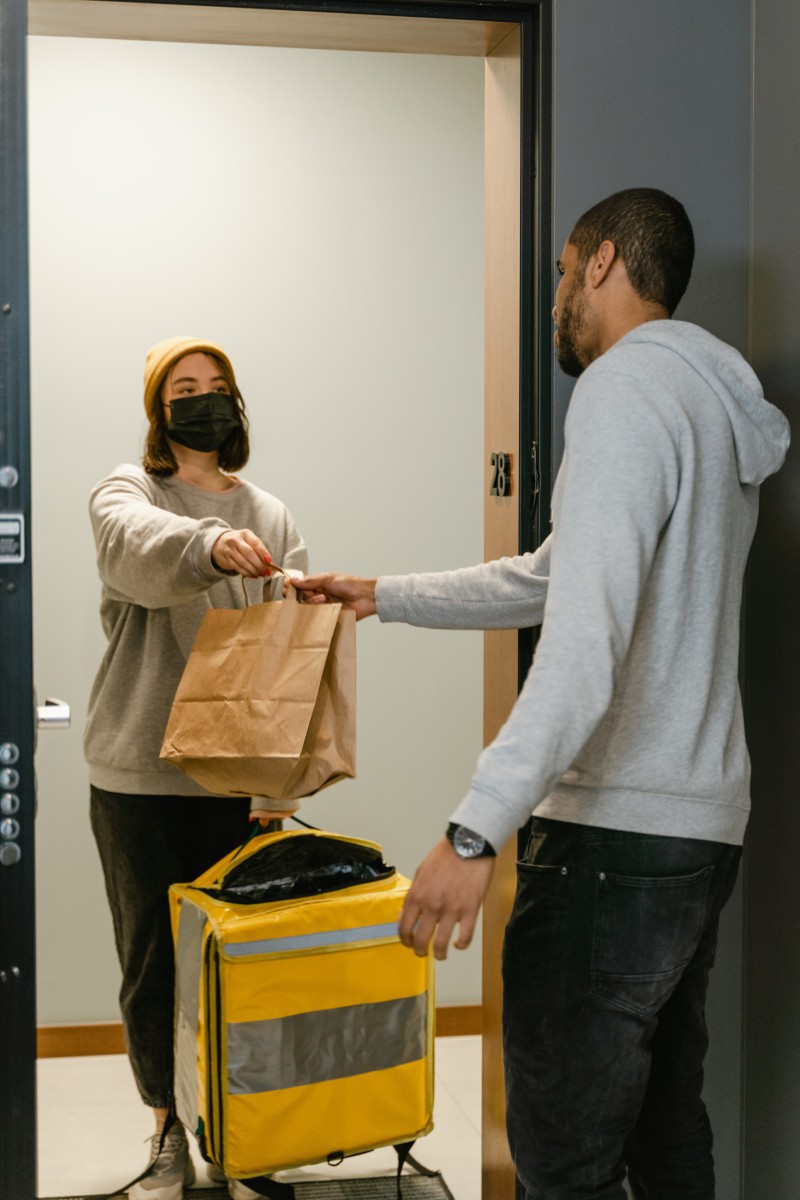
Factors to Consider
When selecting a sustainable food delivery service, several factors come into play. A significant consideration should be the source of their food. Do they partner with local farmers who employ organic and sustainable farming methods? The distance food travels to reach your plate also plays a crucial role in its environmental impact.
Next, think about packaging. Opt for services that use biodegradable or compostable packaging or, better yet, have a returnable, reusable packaging system in place.
Finally, consider the company’s waste management policy. Do they have a system to manage food waste, or perhaps they try to minimize it through efficient planning and ordering processes?
Checking Certifications and Credentials
Certifications and credentials provide an additional layer of confidence in your choice. Look for food delivery services that are certified organic, as this means their products are grown without synthetic pesticides and fertilizers. Services might also have credentials like Fair Trade Certified or Rainforest Alliance Certified, indicating that they adhere to rigorous social, environmental, and economic standards.
However, always research these certifications to understand what they mean and the standards they uphold. Some certifications may sound impressive but don’t carry much weight in practice.
Tips for a Successful Experience
Choosing a service is just the beginning. To make the most of your sustainable food delivery experience, here are a few tips:
- Plan your meals: This helps reduce food waste and ensures you make the most of your delivery.
- Communicate: If you have specific dietary needs or preferences, communicate them.
- Recycle: Make the most of the service’s recycling program, if available. If not, take responsibility for recycling packaging materials where possible.
- Share feedback: If there’s something you love or something you think could be improved, let the company know. Your feedback can help them to enhance their sustainability efforts continually.
In conclusion, choosing a sustainable food delivery service involves understanding their practices, verifying their credentials, and ensuring you know how to maximize your experience. Considering these considerations, you can enjoy delicious, eco-friendly meals delivered right to your doorstep.
Conclusion
As we navigate the 21st century, the importance of sustainable practices in every sector, including food delivery, can’t be overemphasized. Sustainable food delivery services allow us to enjoy the convenience of home-delivered meals while mitigating our environmental footprint.
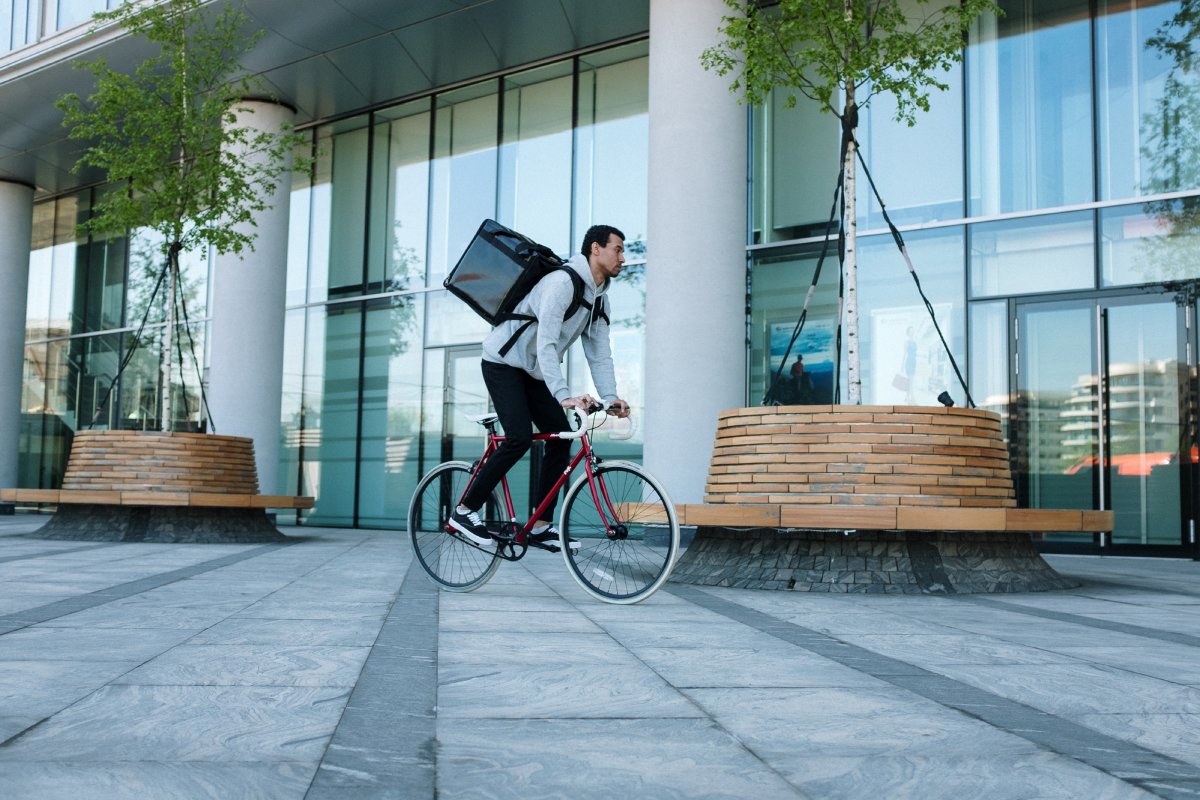
Recap of Sustainable Food Delivery Services
Throughout this blog post, we’ve covered how sustainable food delivery services operate, from food sourcing and production to packaging and delivery methods. Case studies of successful sustainable food delivery services have shown us that farm-to-table, zero-waste, and local co-op models can be profitable and scalable.
These services offer tangible environmental benefits like a reduced carbon footprint, waste reduction, and support for sustainable agriculture. At the same time, they also present health and lifestyle benefits through access to fresh, locally sourced produce and the convenience of doorstep delivery.
Importance of Reducing Environmental Footprint in Food Delivery
The environmental footprint of our food choices has been brought to the forefront in recent years. The traditional food delivery model often involves extensive plastic packaging, food waste, and a significant carbon footprint from long-distance transportation. By opting for sustainable food delivery, we can help address these issues and positively impact our planet.
Call to Action for Readers to Consider Sustainable Options
Having navigated the ins and outs of sustainable food delivery services, we ask you to reflect on your food choices and their broader implications. Consider your options and the environmental footprint of each. Opting for a sustainable food delivery service might seem like a small choice. Still, collectively, our small choices can make a massive difference.
Sustainability is not just a buzzword; it’s a critical element of our future. So the next time you order food delivery, consider going for the green option. Explore the range of sustainable food delivery services available, make an informed choice, and be a part of the solution. After all, every meal is an opportunity to vote for the world we want to live in.
Remember, the sustainability journey is ongoing, and every step counts, no matter how small. Your choices matter, and your actions can help foster a more sustainable and resilient food system.

